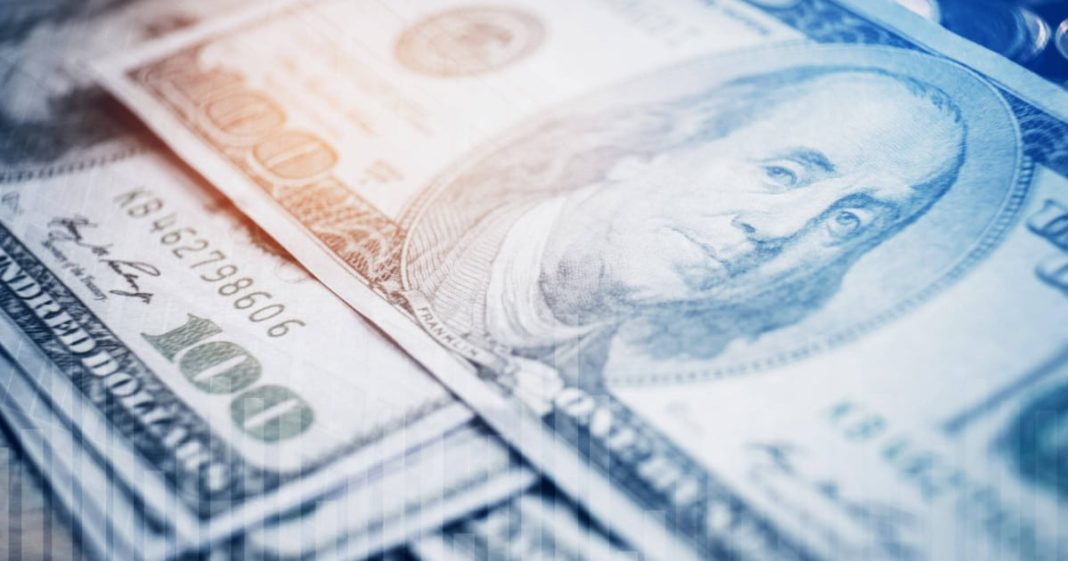The U.S. dollar recently surged, climbing 1.4% on the ICE U.S. Dollar Index, spurred by the recent election results, as former President Donald Trump returned to office. This rally, which saw the greenback strengthening against major currencies such as the euro, yen, and yuan, has renewed investor interest in how a robust dollar might impact multinational giants. One such company in the spotlight is Procter & Gamble Co. (PG), a leading consumer goods manufacturer with vast international operations.
Procter & Gamble (P&G), known for products ranging from Tide and Pampers to Gillette and Crest, generates significant revenue outside the U.S., making it particularly vulnerable to currency fluctuations. The dollar’s appreciation could both challenge and shape P&G’s performance in ways that investors should closely examine, especially if this trend continues.
Impact of a Strong Dollar on Multinationals Like Procter & Gamble
A strong dollar tends to weigh on multinationals because it erodes the value of foreign revenue when converted back into U.S. dollars. For companies like P&G, which saw a 1% dip in net sales in Q1 FY2025 compared to the previous year, currency fluctuations are a notable factor. In this quarter, P&G’s organic sales, which exclude currency impacts, increased by 2%, underscoring how currency-neutral performance remains a strategic focus for the company.
Historically, P&G’s financials reveal mixed results during periods of dollar strength. While strong brand loyalty and premium products often enable price adjustments, currency headwinds still tend to compress margins. For instance, P&G’s core EPS grew by 5% in Q1 FY2025 despite the dollar’s impact. This growth, adjusted for foreign exchange, underscores the company’s resilience but also signals the sensitivity of its earnings to currency shifts.
Procter & Gamble’s Global Revenue Footprint
P&G’s global sales breakdown illustrates the company’s exposure to currency risks. More than half of its total revenue comes from outside North America, with significant sales in markets such as Europe, Asia-Pacific, and Latin America. Such extensive international presence makes P&G vulnerable to dollar appreciation, as each overseas sale loses value when translated into a stronger dollar. For instance, the Beauty segment, heavily reliant on markets like China, reported a 5% decline in net sales during Q1 FY2025, partly due to currency challenges.
P&G’s currency-neutral core EPS, a metric adjusted for foreign exchange, increased only 4%, slightly below the overall core EPS growth. This performance suggests that while P&G manages well across regions, the currency remains an external factor that can modestly drag earnings growth.
Strategic Responses to Currency Challenges
P&G has taken proactive steps to mitigate currency risks through targeted pricing strategies and cost management. In regions facing strong currency headwinds, the company has often resorted to price increases to counterbalance the impact of the exchange rate. In Q1 FY2025, pricing contributed 1% to the company’s 2% organic sales growth, which P&G credits to strategic price adjustments across various markets.
To further combat the impact of a strong dollar, P&G leverages productivity savings, with Q1 results showing 230 basis points in productivity gains across its operations. These measures have allowed P&G to reinvest in brand-building activities and manage costs even amid fluctuating currency values. Additionally, the company’s restructuring in certain markets, including Argentina, where economic volatility significantly impacts operations, reflects an approach to reduce exposure in hyperinflationary regions.
Investment Considerations
For investors, evaluating P&G in light of the strong dollar involves assessing both valuation and dividend yield. P&G’s shares currently trade at a forward non-GAAP price-to-earnings (P/E) of 23.8x, higher than the industry average of 17.6%, a reflection of its strong brand portfolio and consistent performance. In terms of dividends, P&G’s yield of over 2.4% is appealing for income-focused investors, as the company remains committed to dividend growth and share repurchases. The company’s dividends have grown about 6% over the past five years.
Compared to its peers, P&G has outperformed in terms of organic sales growth and productivity metrics, maintaining a stable core operating margin despite currency headwinds. This stability could make P&G a favorable option for investors seeking resilience, even if short-term earnings fluctuate due to the dollar’s movements.
What Should Investors Do?
With the dollar at high levels and P&G’s significant international exposure, potential investors might view P&G as a steady choice, albeit with moderated expectations on earnings growth due to currency effects. Those already holding shares may find it prudent to maintain their position, considering the company’s dividend reliability and strategic currency hedges.
For prospective investors, P&G’s focus on core brands, pricing flexibility, and productivity improvements could make it a viable option in a diversified portfolio, especially if the dollar stabilizes in the coming months.


